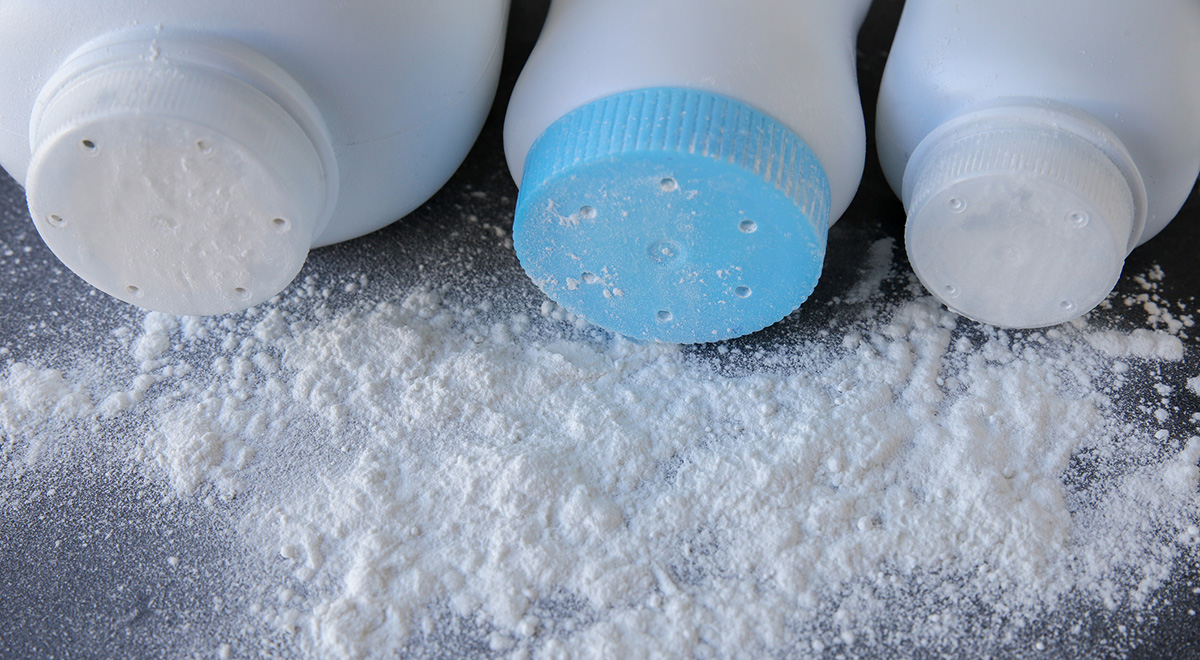Amid the ongoing controversy over whether the talc in Johnson & Johnson’s Baby Powder actually causes ovarian cancer, a potentially damning piece of evidence has surfaced during discovery in a recently-filed lawsuit that will soon be going to trial.
For decades, the New Jersey-based healthcare products company has claimed that the talc used in its flagship product “has never contained asbestos and it never will.” However, recently unsealed documents dating back to the early 1970s tell a different story. Plaintiffs are now saying that J&J’s talc “is not now, nor has it ever been free from asbestos and asbestiform fibers.”
To date, there have been five verdicts in favor of plaintiffs who allege that their ovarian cancer was caused by the talc contained in Baby Powder, including a record $417 million awarded to a 63-year-old woman in California. That plaintiff, Eva Echeverria, alleged that J&J continued to promote its product for genital use despite its knowledge of scientific studies linking talc to ovarian cancer. Johnson & Johnson, which plans to appeal that verdict, continues to insist that they are “guided by science, which supports the safety of Johnson’s Baby Powder.”
There is arguably some mixed evidence about the carcinogenicity of talc by itself. However, there is no question about asbestos. That mineral, which is often found near talc deposits, has long been known to cause a variety of cancers. Until now, none of the current lawsuits against J&J have involved asbestos. That is about to change. A case brought against Johnson & Johnson in California alleges that the plaintiff developed mesothelioma as the result of breathing the company’s talc-containing products over a forty-year period.
The recently unsealed documents show test results of the talc used by J&J as being free of asbestos as far back as 1972. A decade later, the company commissioned a global study of the talc used in its products, which was found to be “free from asbestiform minerals.” However, a 1973 report from one of the company’s talc suppliers indicated the presence of minerals that “might be classified as asbestos fibers.” After that report was received, a company official recommended that talc in its products be replaced with cornstarch.
Instead, Johnson & Johnson went on the offensive in 1974 when another talc supplier in Italy published a booklet revealing the discovery of asbestos fibers in its product. According to the documents that have come to light, a scientist at J&J considered the publication to be a “business threat” that could “raise doubts on the validity of the documentation of purity and safety of talc.” That scientist pressured the owners of the talc mining operation to suppress the English-language version of the booklet until J&J could make “revisions.” All references to asbestos in J&J’s “official” version were then deleted.
Plaintiff’s counsel Mark Lanier confronted J&J’s chief medical officer during a deposition, asking if she had ever seen the “revised” booklet in question, which she denied. He then referred to early test results that had revealed trace amounts of asbestos and asked whether or not J&J should have issued a warning. The witness replied that at that time, “…there could have been different types of testing that may not be as accurate as the testing we have today.”
Even trace amounts of asbestos in talc pose a serious health threat. Dr. Barry Castleman, a public health scientist who has studied asbestos and health issues for more than four decades, says talc “is a problem even if it’s found in small amounts…especially because it’s used by children and women.” In 1972, he wrote a letter to Johnson & Johnson warning them about the health hazards of asbestos in talc. Their response, according to Castleman, was that “there was no asbestos in talc.”
If that is truly the case, why did Johnson & Johnson suppress the booklet from its Italian supplier?
This recent revelation will be shedding new light on the question of the carcinogenicity of Johnson & Johnson’s talc-containing products, what the company knew about it – and why they chose to conceal that information.

